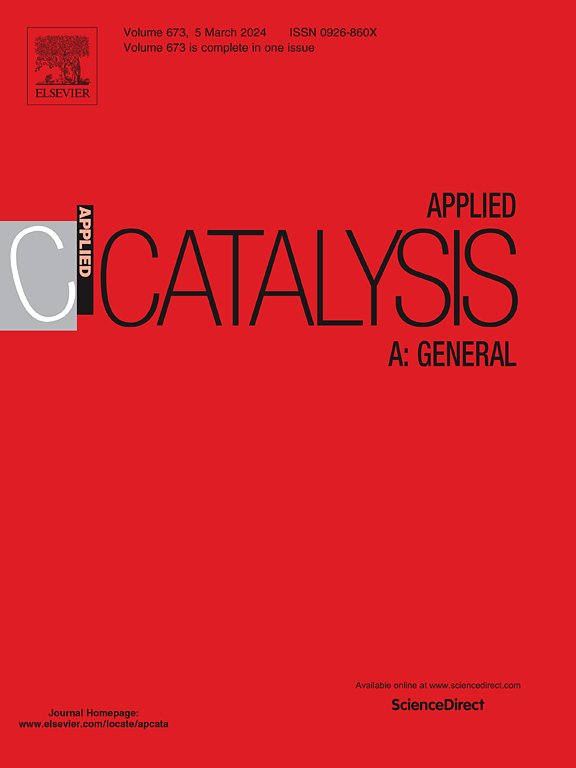含氧空位Bi2WO6的Au修饰促进苯甲醇的选择性氧化
IF 4.8
2区 化学
Q2 CHEMISTRY, PHYSICAL
引用次数: 0
摘要
光催化技术选择性氧化苯甲醇制苯甲醛在医药和精细化学品的合成中具有重要意义。本文采用水热法制备了含氧空位Bi2WO6 (Bi2WO6- ov)为前驱体,并采用硼氢化钠还原法制备了2 wt% Au/Bi2WO6- ov。2 wt% Au/Bi2WO6-Ov利用氧空位和Au的低负荷显著提高了光催化性能(苯甲醇转化率为93.8 %),比传统的Bi2WO6-Ov提高了近10倍。一系列表征结果(XRD, XPS, UV-vis DRS, PL, SEM, TEM等)结合DFT计算表明,苯甲醇作为酸性位吸附在Au NPs(纳米颗粒)上,氧空位充当电子桥并充当路易斯碱。电子从Bi2WO6-Ov表面转移到Au上,提高了电子空穴分离效率,提高了苯甲醇的氧化能力。基于上述实验和DFT计算,提出了一种可能的机理。本文章由计算机程序翻译,如有差异,请以英文原文为准。
Modification of Bi2WO6 containing oxygen vacancies with Au to promote selective oxidation of benzyl alcohol
Selective oxidation of benzyl alcohol to benzaldehyde by photocatalytic technology is important in the synthesis of pharmaceuticals and fine chemicals. Here, we prepared oxygen vacancy-containing Bi2WO6 (Bi2WO6-Ov) as a precursor by hydrothermal method, and prepared 2 wt% Au/Bi2WO6-Ov by sodium borohydride reduction method. 2 wt% Au/Bi2WO6-Ov dramatically upgraded the photocatalytic performance (The conversion of benzyl alcohol was 93.8 %) by utilizing the oxygen vacancy and the low loading of Au, which is nearly 10 times higher than that of conventional Bi2WO6-Ov. A series of characterization results (XRD, XPS, UV–vis DRS, PL, SEM, TEM, etc.), combined with DFT calculations, revealed that benzyl alcohol was well adsorbed on Au NPs (nanoparticles) as an acidic site, and the oxygen vacancies acted as an electron bridge and acted as Lewis bases. The electrons were transferred from the surface of Bi2WO6-Ov to Au, upgrading the electron-hole separation efficiency, which raised the ability of benzyl alcohol oxidation. Based on the above experiments and DFT calculations, a possible mechanism is proposed.
求助全文
通过发布文献求助,成功后即可免费获取论文全文。
去求助
来源期刊

Applied Catalysis A: General
化学-环境科学
CiteScore
9.00
自引率
5.50%
发文量
415
审稿时长
24 days
期刊介绍:
Applied Catalysis A: General publishes original papers on all aspects of catalysis of basic and practical interest to chemical scientists in both industrial and academic fields, with an emphasis onnew understanding of catalysts and catalytic reactions, new catalytic materials, new techniques, and new processes, especially those that have potential practical implications.
Papers that report results of a thorough study or optimization of systems or processes that are well understood, widely studied, or minor variations of known ones are discouraged. Authors should include statements in a separate section "Justification for Publication" of how the manuscript fits the scope of the journal in the cover letter to the editors. Submissions without such justification will be rejected without review.
 求助内容:
求助内容: 应助结果提醒方式:
应助结果提醒方式:


